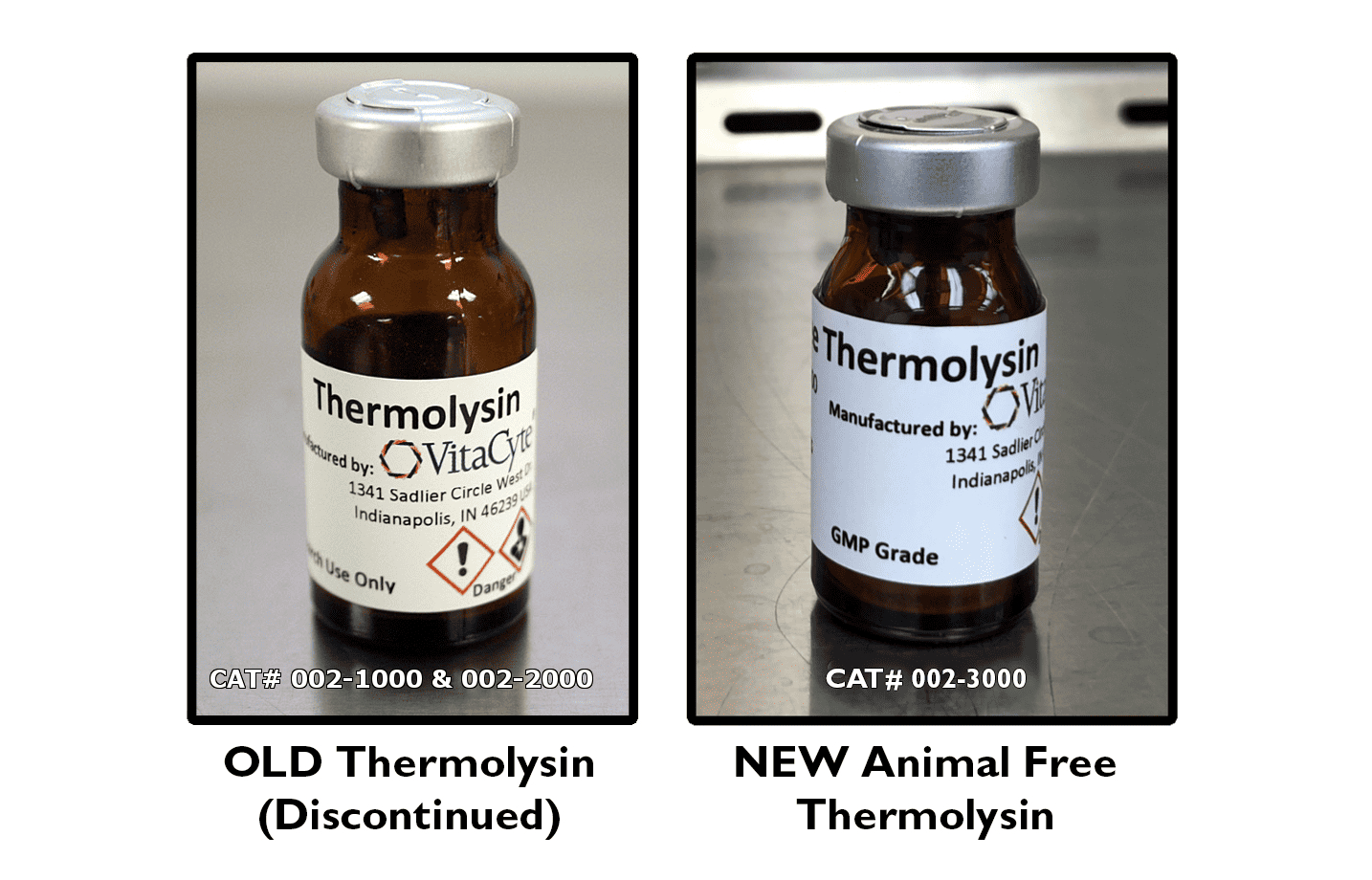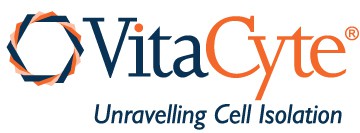
Published May 2018, Updated March 2023
More human islet isolations have been performed using purified collagenase and thermolysin than any other purified enzyme mixture (1). Several reports have shown adverse effects when using thermolysin for human islet isolation (2, 3). This post reviews specific concerns when using thermolysin for human islet isolation. It will also briefly discuss the recent change in thermolysin made by the supplier to an animal origin-free product.
Choice of thermolysin in Liberase HI formulation based on cost, not performance: Cost was the primary factor for use of thermolysin in Liberase™ HI Purified Enzyme Blend. Initially, the goal of the Liberase project team was to purify Clostridium histolyticum neutral protease (CHNP) from the same C. histolyticum raw material used as a source of the collagenase. However, this enzyme was difficult to purify and was unstable on storage. This led to the evaluation of purified Dispase or Thermolysin in collagenase-protease enzyme mixtures used to isolate human islets. Both performed similarly, leading to the choice of thermolysin based on cost.
Importance of the extinction coefficient in translating mass of enzyme to its specific activity: The Liberase HI enzyme formulation used since 2001 contained about 11.5 mg of thermolysin and ≈ 485 mg of purified collagenase. The protein concentration of thermolysin was determined using a 0.1% extinction coefficient at A280 = 1.1 (Ɛ0.1%= 1.1). Here, 1 mg/mL neutral pH solution from multiple lots of thermolysin were prepared, the A280 for each solution determined, with the mean A280 = 1.1. The extinction coefficient is a critical parameter for characterizing enzymes since the mass of protein (i.e., enzyme) is directly related to total enzyme activity. The specific activity of an enzyme is the enzyme units per mg of material (U/mg).
VitaCyte also used Ɛ0.1%= 1.1 to determine the mass of thermolysin product to be consistent with the thermolysin concentration used for Liberase HI. In contrast, Roche’s Modified Liberase product line now uses a different extinction coefficient for thermolysin: Ɛ0.1% = 1.76 (reported on their Thermolysin Certificate of Analysis).
To calculate equivalent enzyme activities between the Thermolysin products:
- Each mg of the Original Liberase or VitaCyte Thermolysin product is equivalent to 0.625 mg of the Modified Liberase Thermolysin product.
- Each mg of Modified Liberase Thermolysin is equivalent to 1.6 mg of the Original Liberase or VitaCyte Thermolysin product.
This calculation can be used for any protease assay used to measure thermolysin activity.
Consequences of this difference in thermolysin activity between suppliers: The change in the concentration of thermolysin led many laboratories to unknowingly add excessive amounts of thermolysin activity when using the Roche MTF kit. Those who view a kit as a “ready to use product,” likely used the entire 15 mg bottle for human islet isolation. However, others realizing thermolysin’s strong protease activity, either reduced the dose of thermolysin (5, 6) used for islet isolation or replaced it with another neutral protease enzyme (2, 7-9).
Change in thermolysin product, now labeled animal origin-free: In 2017, the supplier of purified thermolysin discontinued manufacture of the thermolysin product used since 1994 for human islet isolation and replaced it with an animal origin-free product. VitaCyte’s discussion with the supplier indicated that the only change in the manufacturing process was eliminating bovine casein in the fermentation media so that the product could be labeled animal origin-free. Internal evaluation of the new product at VitaCyte led the scientific staff to conclude that there could be changes in the biochemical characteristics of this enzyme. VitaCyte notified customers who currently purchase thermolysin of this product change. The CIzyme Thermolysin (catalog #002-1000 and #002-2000) were replaced with a new Animal Origin-Free (AOF) Thermolysin product (#002-3000).
VitaCyte continues to use the same extinction coefficient to determine the protein concentration in the AOF Thermolysin product. These AOF lots have the same specific activity as the discontinued thermolysin product. However, we do not know how this product change will impact its effectiveness to isolate human islets.
If you are interested in learning more about the change in thermolysin or if you want to evaluate BP Protease as a replacement for thermolysin in human islet isolation, contact us.
References
- Balamurugan AN, Naziruddin B, Lockridge A, Tiwari M, Loganathan G, Takita M, et al. Islet product characteristics and factors related to successful human islet transplantation from the Collaborative Islet Transplant Registry (CITR) 1999-2010. American Journal Transplantation. 2014;14(11):2595-606.
- Balamurugan AN, Loganathan G, Bellin MD, Wilhelm JJ, Harmon J, Anazawa T, et al. A new enzyme mixture to increase the yield and transplant rate of autologous and allogeneic human islet products. Transplantation. 2012;93(7):693-702.
- Brandhorst H, Friberg A, Nilsson B, Andersson HH, Felldin M, Foss A, et al. Large-scale comparison of Liberase HI and collagenase NB1 utilized for human islet isolation. Cell Transplantation. 2010;19(1):3-8.
- Fetterhoff TJ, Cavanagh TJ, Wile KJ, Wright MJ, Dwulet FE, Gill J, et al. Human pancreatic dissociation using a purified enzyme blend. Transplantation Proceedings. 1995;27(6):3282-3.
- O’Gorman D, Kin T, Imes S, Pawlick R, Senior P, Shapiro AM. Comparison of Human Islet Isolation Outcomes Using a New Mammalian Tissue-Free Enzyme Versus Collagenase NB-1. Transplantation. 2010;90:255-59.
- Stahle M, Foss A, Gustafsson B, Lempinen M, Lundgren T, Rafael E, et al. Clostripain, the Missing Link in the Enzyme Blend for Efficient Human Islet Isolation. Transplantation Direct. 2015;1(5):e19.
- Bucher P, Mathe Z, Morel P, Bosco D, Andres A, Kurfuest M, et al. Assessment of a novel two-component enzyme preparation for human islet isolation and transplantation. Transplantation. 2005;79(1):91-7.
- Balamurugan AN, Green ML, Breite AG, Loganathan G, Wilhelm JJ, Tweed B, et al. Identifying Effective Enzyme Activity Targets for Recombinant Class I and Class II Collagenase for Successful Human Islet Isolation. Transplantation Direct. 2016;2(1):e54.
- Loganathan G, Subhashree V, Breite AG, Tucker WW, Narayanan S, Dhanasekaran M, et al. Beneficial effect of recombinant rC1rC2 collagenases on human islet function: Efficacy of low-dose enzymes on pancreas digestion and yield. American Journal Transplantation. 2018;18(2):478-85.
